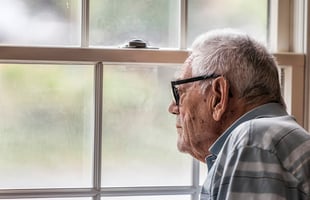Researchers Identify Childhood Behaviors That May Signal Future Self-Harm

Researchers have identified two distinct pathways by which adolescents develop self-harming behaviors: the first is associated with years of emotional difficulties and bullying: the second is associated with more willingness to take risks and experiencing less security with peers and family during adolescence. These findings were published in the Journal of the American Academy of Child and Adolescent Psychiatry.
“There is global consensus that self-harm is a prevalent concern in adolescence and a priority for public health efforts,” wrote Stepheni Uh, M.Phil., of the University of Cambridge and colleagues. “Establishing early risk factors and profiles that can be traced and tracked across development provides a crucial step towards the early identification of these young people … and ultimately prevention and treatment.”
Uh and colleagues analyzed data from the Millennium Cohort Study, a longitudinal assessment of about 19,000 young people throughout the United Kingdom. They focused on 1,580 participants (73% female) who had reported engaging in self-harm at age 14 and used computer modeling to identify any social or behavioral similarities in this group compared with peers who did not self-harm. Data were taken from the participants’ responses on the Strength and Difficulties Questionnaire and Mood and Feelings Questionnaire (MFQ) at ages 5, 7, 11, and 14; a positive answer on the MFQ question “In the past year have you hurt yourself on purpose?” was used as an indicator of self-harm.
The model found that most of the adolescents who harmed themselves fit into one of two behavioral clusters. The first group, which included 379 teens, was characterized by emotional and behavioral difficulties such as hyperactivity or conduct problems as early as age 5; these children also reported frequent bullying. The second and larger cluster (905 teens) did not exhibit any childhood psychopathology; rather, self-harm was associated with increased risk-taking behaviors and changes in their relationship with family and friends during adolescence. Uh and colleagues also found that adolescents in both clusters reported low self-esteem and difficulty sleeping at age 14.
“A key implication of our findings is that we have a decade-long window to intervene for some children who are at increased risk of self-harm as adolescents,” Uh and colleagues wrote. “Early targeted interventions, particularly those focused on emotion regulation, may be helpful for this [first] group.”
The larger group of self-harming adolescents without childhood psychopathology “represents the challenge we face to assist those in the general population,” the authors continued. “However, their indication of poorer mental health on the MFQ than the Comparison sample at age 14 as well as both risk-taking and peer-related factors suggest that access to universal programs and materials for self-help and problem-solving/conflict regulation … may be effective.”
For related information, see the Psychiatric News article “Bullying Found to Increase Risk for Adolescent Suicide Attempts Worldwide.”
Help APA Fight for Better Reimbursement for YOU – Take our Outpatient Insurance Survey by May 20
APA advocates on behalf of psychiatrists to increase reimbursement and decrease administrative burdens from public and private payers, legislators, and regulatory agencies. To ensure APA is well equipped to fight for better payment for clinical services, we need to know about our members’ experience with outpatient insurance participation. Your responses to questions regarding the nature of your outpatient practice and your experience with participating in health plan networks will help strengthen our arguments for appropriate reimbursement.
Will you please take 5 minutes today to complete this important survey?
Don't miss out! To learn about newly posted articles in Psychiatric News, please sign up here.






